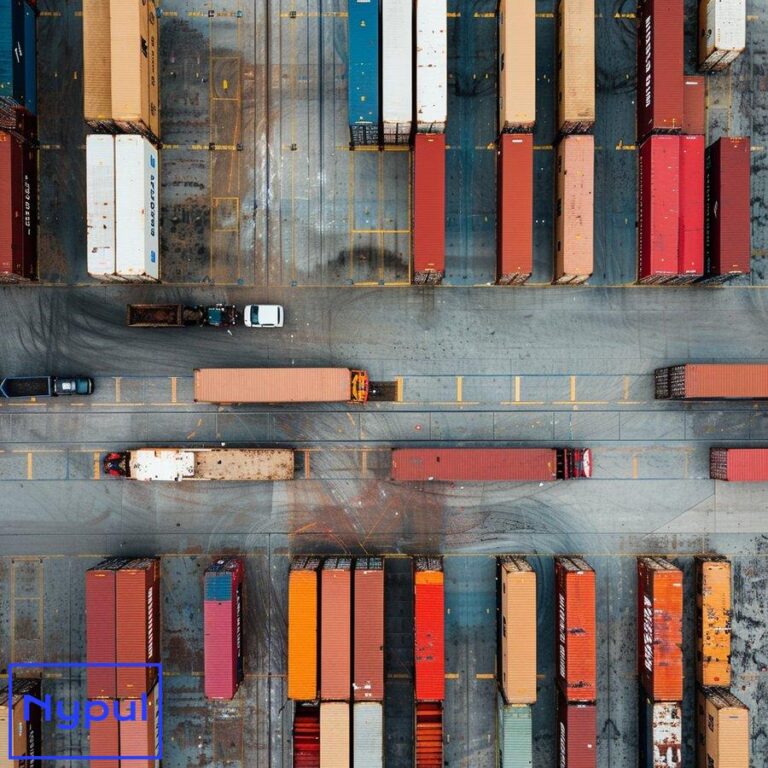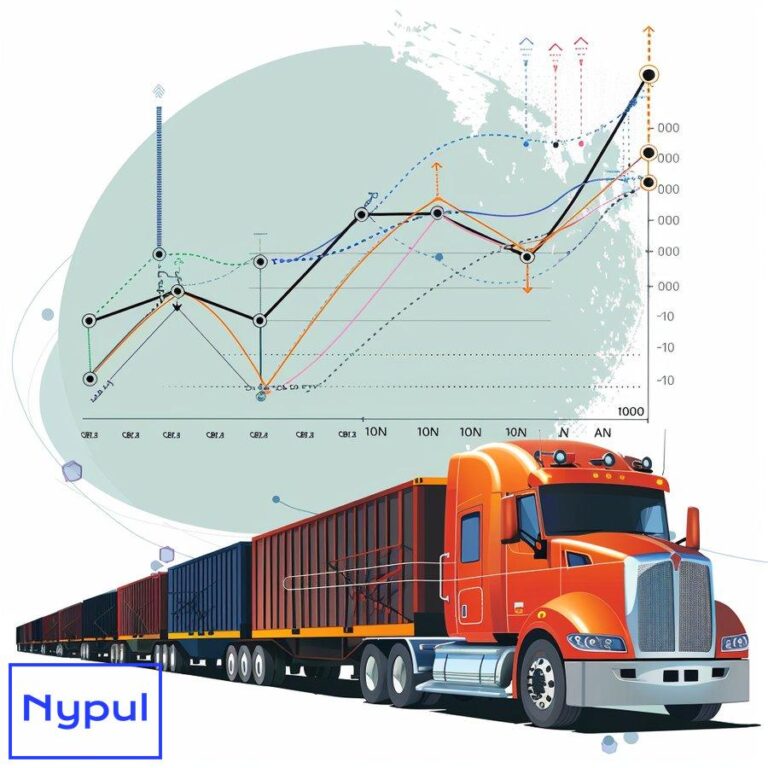What Is Route Optimization in Transportation
What is route optimization in transportation?
Route optimization is the process of determining the most efficient and cost-effective routes for vehicles in a transportation network. It involves using advanced algorithms and technology to analyze various factors such as traffic patterns, road conditions, vehicle capacities, and delivery time windows to create optimal routes that minimize travel time, fuel consumption, and operational costs while maximizing customer satisfaction and on-time deliveries.
Route optimization goes beyond simply finding the shortest path between two points. It takes into account the complexities of real-world transportation scenarios, such as:
- Multiple stops and deliveries on a single route
- Time-sensitive pickups and deliveries
- Vehicle capacity constraints
- Driver schedules and availability
- Traffic congestion and road closures
- Customer preferences and delivery windows
By considering these factors, route optimization helps transportation companies streamline their operations, reduce costs, and improve overall efficiency. It enables them to make data-driven decisions and adapt to changing conditions in real-time, ensuring that goods are delivered to the right place at the right time with minimal waste and maximum profitability.
How does route optimization differ from traditional route planning?
Traditional Route Planning
Traditional route planning involves manually creating routes based on static information such as distance, road network, and basic vehicle constraints. It often relies on the knowledge and experience of human planners who use maps, spreadsheets, or basic routing software to determine the best routes for their vehicles.
While traditional route planning can be effective for simple transportation scenarios, it has several limitations:
- Limited ability to handle complex constraints and dynamic factors
- Time-consuming and labor-intensive process
- Prone to human error and suboptimal decision-making
- Difficulty in adapting to real-time changes and disruptions
Advanced Route Optimization
In contrast, advanced route optimization leverages sophisticated algorithms, machine learning, and real-time data to automatically generate optimal routes that take into account a wide range of dynamic factors. It uses powerful computing resources to analyze vast amounts of data and find the best possible routes based on predefined objectives and constraints.
Key differences between route optimization and traditional route planning include:
| Route Optimization | Traditional Route Planning |
|---|---|
| Automated and data-driven | Manual and experience-based |
| Considers dynamic factors (traffic, weather, etc.) | Relies on static information |
| Optimizes for multiple objectives (cost, time, etc.) | Focuses on basic constraints (distance, vehicle capacity) |
| Adapts to real-time changes and disruptions | Difficult to adjust to changing conditions |
| Scalable and efficient for large transportation networks | Time-consuming and labor-intensive for complex scenarios |
By leveraging advanced technologies and algorithms, route optimization enables transportation companies to make more informed, efficient, and profitable routing decisions compared to traditional methods.
What are the key components of an effective route optimization system?
An effective route optimization system consists of several key components that work together to generate optimal routes and improve transportation efficiency. These components include:
Data Integration and Management
A robust data integration and management framework is essential for route optimization. It involves collecting, storing, and processing large volumes of data from various sources, such as:
- Geographic information systems (GIS) for road network and location data
- GPS devices and telematics systems for real-time vehicle tracking
- Traffic and weather data providers for current and predicted conditions
- Customer relationship management (CRM) systems for delivery requirements and preferences
The data management component ensures that all relevant information is accurately captured, cleaned, and stored in a centralized database for efficient access and analysis.
Optimization Algorithms and Models
At the core of a route optimization system are advanced algorithms and mathematical models that analyze the available data and generate optimal routes based on predefined objectives and constraints. These algorithms can include:
- Heuristic methods (e.g., nearest neighbor, savings algorithm) for quick and practical solutions
- Metaheuristics (e.g., genetic algorithms, simulated annealing) for more complex and large-scale problems
- Exact methods (e.g., integer programming, branch-and-bound) for finding provably optimal solutions
The choice of algorithm depends on the specific requirements of the transportation problem, such as the size of the network, the number of constraints, and the desired level of optimality.
User Interface and Visualization
An intuitive and user-friendly interface is crucial for transportation planners and dispatchers to interact with the route optimization system effectively. Key features of the user interface include:
- Interactive maps for visualizing routes, stops, and vehicle locations
- Drag-and-drop functionality for manual route adjustments
- Real-time alerts and notifications for route deviations and disruptions
- Customizable dashboards and reports for performance monitoring and analysis
The visualization component helps users quickly understand and interpret the optimized routes, making it easier to communicate plans to drivers and stakeholders.
Integration with Existing Systems
To maximize the benefits of route optimization, it is important to integrate the optimization system with existing transportation management systems (TMS) and other relevant software, such as:
- Fleet management systems for vehicle tracking and maintenance
- Order management systems for customer orders and delivery requirements
- Accounting and billing systems for cost tracking and invoicing
Seamless integration ensures that optimized routes are automatically synced with other operational processes, reducing manual data entry and minimizing errors.
By combining these key components, an effective route optimization system enables transportation companies to make data-driven decisions, improve operational efficiency, and deliver better customer service.
Which factors are considered in the route optimization process?
The route optimization process takes into account a wide range of factors to generate the most efficient and cost-effective routes for transportation operations. These factors can be broadly categorized into the following areas:
Vehicle Characteristics
The physical attributes and capabilities of the vehicles in the fleet play a significant role in route optimization. Key factors include:
- Vehicle capacity (e.g., weight, volume, number of pallets)
- Fuel type and consumption rate
- Speed and acceleration profiles
- Loading and unloading times
By accurately modeling vehicle characteristics, route optimization algorithms can ensure that the right vehicle is assigned to the right route, minimizing costs and maximizing efficiency.
Road Network and Infrastructure
The structure and conditions of the road network and transportation infrastructure directly impact the feasibility and efficiency of routes. Factors to consider include:
- Road types (e.g., highways, local streets, one-way roads)
- Speed limits and traffic patterns
- Tolls and restricted areas
- Bridges, tunnels, and other physical constraints
Incorporating detailed road network data enables route optimization algorithms to find the fastest and most cost-effective paths while avoiding potential obstacles and delays.
Customer Requirements and Preferences
Understanding and accommodating customer needs and preferences is crucial for successful route optimization. Key factors include:
- Delivery time windows and service level agreements (SLAs)
- Access restrictions (e.g., limited parking, security clearance)
- Special handling requirements (e.g., temperature control, hazardous materials)
- Customer priorities and value tiers
By factoring in customer-specific requirements, route optimization ensures that deliveries are made on time and in compliance with agreed-upon standards, leading to higher customer satisfaction and retention.
Driver Schedules and Regulations
The availability and working conditions of drivers are important considerations in route optimization. Factors to account for include:
- Driver shift schedules and break times
- Hours of service (HOS) regulations and rest periods
- Driver skills and certifications (e.g., hazardous materials handling)
- Driver preferences and familiarity with routes
Optimizing routes based on driver schedules and regulations helps ensure compliance with labor laws, reduces driver fatigue, and improves overall safety and efficiency.
Real-time Traffic and Weather Conditions
Incorporating real-time data on traffic and weather conditions allows route optimization algorithms to dynamically adjust routes based on current and predicted circumstances. Key factors include:
- Congestion levels and travel times
- Road closures and construction zones
- Accidents and emergency situations
- Weather forecasts and severe weather alerts
By continuously monitoring and adapting to real-time conditions, route optimization helps transportation companies avoid delays, minimize fuel consumption, and improve on-time delivery performance.
Cost Factors and Objectives
The ultimate goal of route optimization is to minimize costs while meeting service level requirements. Cost factors to consider include:
- Fuel costs based on distance, vehicle type, and consumption rates
- Driver wages and overtime pay
- Vehicle maintenance and depreciation
- Tolls, parking fees, and other route-specific expenses
By carefully balancing cost factors with other optimization objectives, such as minimizing total distance or maximizing vehicle utilization, route optimization helps transportation companies achieve their financial goals while maintaining high levels of service.
How can businesses implement route optimization in their transportation operations?
Implementing route optimization in transportation operations involves a systematic approach that combines technology, data, and process improvements. Here are the key steps businesses can follow to successfully adopt route optimization:
Assess Current Processes and Identify Opportunities
The first step is to thoroughly evaluate the current transportation processes and identify areas where route optimization can provide the most significant benefits. This assessment should include:
- Analyzing historical route data and performance metrics
- Identifying inefficiencies, such as long travel times, underutilized vehicles, or frequent delays
- Engaging with drivers, dispatchers, and customers to gather insights and pain points
- Benchmarking against industry best practices and competitors
By clearly understanding the current state and improvement opportunities, businesses can set realistic goals and build a strong case for route optimization.
Select the Right Route Optimization Solution
Choosing the right route optimization software is critical for successful implementation. Key factors to consider when evaluating solutions include:
- Compatibility with existing systems and data sources
- Scalability to handle the size and complexity of the transportation network
- User-friendliness and ease of adoption for planners and drivers
- Customization options to meet specific business requirements
- Integration with real-time data sources (e.g., GPS, traffic, weather)
- Vendor support and ongoing maintenance
Businesses should carefully assess their needs and select a solution that aligns with their goals, budget, and technical capabilities.
Prepare and Cleanse Data
Accurate and reliable data is the foundation of effective route optimization. Before implementing the optimization solution, businesses must ensure that all relevant data is collected, cleaned, and formatted correctly. This includes:
- Verifying the accuracy and completeness of customer addresses and delivery requirements
- Updating road network data and travel time estimates
- Standardizing vehicle and driver information across systems
- Establishing data integration processes to ensure continuous data flow
Investing time and resources in data preparation helps ensure that the route optimization algorithms have the necessary inputs to generate high-quality results.
Train and Engage Employees
Successful route optimization requires buy-in and participation from all stakeholders, particularly planners, dispatchers, and drivers. To ensure smooth adoption, businesses should:
- Provide comprehensive training on the route optimization software and processes
- Communicate the benefits and expectations clearly to all involved parties
- Encourage feedback and suggestions from employees to continuously improve the system
- Recognize and reward individuals and teams for embracing and excelling with the new tools
By actively engaging employees and fostering a culture of continuous improvement, businesses can maximize the benefits of route optimization and drive long-term success.
Monitor, Measure, and Refine
Implementing route optimization is not a one-time event but an ongoing process of monitoring, measuring, and refining. Businesses should establish key performance indicators (KPIs) to track the impact of route optimization, such as:
- On-time delivery rates and customer satisfaction scores
- Total distance traveled and fuel consumption
- Vehicle utilization and capacity utilization
- Cost per mile and cost per delivery
Regularly reviewing these metrics and comparing them to pre-optimization baselines helps quantify the benefits and identify areas for further improvement. Businesses should also continuously gather feedback from drivers, customers, and other stakeholders to refine the optimization algorithms and processes over time.
By following these implementation steps and maintaining a focus on continuous improvement, businesses can successfully integrate route optimization into their transportation operations and realize significant benefits in terms of cost savings, efficiency gains, and customer satisfaction.
What technologies enable advanced route optimization?
Advanced route optimization relies on a combination of cutting-edge technologies to process vast amounts of data, generate optimal routes, and adapt to real-time changes. The following technologies play a crucial role in enabling sophisticated route optimization:
Geographic Information Systems (GIS)
GIS technology provides the foundation for route optimization by digitally representing and analyzing spatial data. Key applications of GIS in route optimization include:
- Mapping and visualizing road networks, customer locations, and vehicle positions
- Calculating accurate distances, travel times, and turn restrictions
- Identifying optimal routes based on predefined criteria (e.g., shortest distance, least traffic)
- Integrating with other data sources, such as traffic and weather information
By leveraging GIS, route optimization algorithms can make informed decisions based on a comprehensive understanding of the transportation network and its constraints.
Artificial Intelligence and Machine Learning
Artificial Intelligence (AI) and Machine Learning (ML) techniques are increasingly being applied to route optimization to handle complex, dynamic, and large-scale problems. AI and ML enable:
- Predictive analytics to forecast traffic conditions, customer demand, and vehicle performance
- Continuous learning and adaptation based on historical data and real-time feedback
- Optimization of multiple objectives and constraints simultaneously (e.g., minimizing cost while maximizing service levels)
- Automated decision-making and route adjustments in response to changing conditions
By leveraging AI and ML, route optimization systems can generate more accurate and efficient routes, even in highly dynamic and uncertain environments.
Cloud Computing and Big Data
Cloud computing and big data technologies provide the scalability and processing power needed to handle the massive amounts of data involved in route optimization. Key benefits include:
- Scalable storage and computing resources to accommodate growing data volumes and complexity
- Parallel processing and distributed computing to solve large-scale optimization problems quickly
- Real-time data processing and analysis to enable dynamic route adjustments
- Secure and reliable data management with built-in backup and recovery capabilities
By leveraging cloud computing and big data, businesses can optimize routes for large and complex transportation networks without investing in expensive on-premises infrastructure.
Internet of Things (IoT) and Telematics
IoT and telematics technologies enable real-time data collection and communication between vehicles, drivers, and the route optimization system. Key applications include:
- GPS tracking to monitor vehicle positions and progress along routes
- Sensors to collect data on vehicle performance, fuel consumption, and driver behavior
- Real-time alerts and notifications for route deviations, delays, or emergencies
- Two-way communication between drivers and dispatchers for dynamic route adjustments
By leveraging IoT and telematics, route optimization systems can make data-driven decisions based on real-time information, ensuring that routes remain efficient and responsive to changing conditions.
Application Programming Interfaces (APIs) and Integration
APIs and integration technologies enable seamless data exchange and interoperability between route optimization systems and other enterprise applications. Key benefits include:
- Integration with transportation management systems (TMS) for end-to-end visibility and control
- Connection with customer relationship management (CRM) systems for up-to-date delivery requirements
- Data sharing with external partners and service providers for collaborative optimization
- Extensibility and customization to meet specific business needs and workflows
By leveraging APIs and integration, businesses can create a unified and cohesive technology ecosystem that maximizes the value of route optimization across the entire transportation operation.
These technologies, when combined effectively, enable advanced route optimization that is data-driven, adaptive, and scalable. By continuously evolving and incorporating new technological advancements, route optimization systems can help businesses stay ahead of the curve in an increasingly complex and competitive transportation landscape.
How is the impact of route optimization measured in transportation?
Measuring the impact of route optimization is essential for businesses to quantify the benefits, justify investments, and continuously improve their transportation operations. The following key performance indicators (KPIs) and metrics are commonly used to assess the effectiveness of route optimization:
On-Time Delivery Rate
On-time delivery rate measures the percentage of deliveries that are completed within the promised time window. Route optimization directly impacts this metric by:
- Minimizing travel times and distances between stops
- Avoiding traffic congestion and other delays
- Ensuring that vehicles are loaded efficiently and depart on schedule
Improvements in on-time delivery rates indicate that route optimization is effectively meeting customer expectations and reducing the risk of penalties or lost business.
Total Distance Traveled
Total distance traveled measures the aggregate distance covered by all vehicles in the fleet over a given period. Route optimization aims to minimize this metric by:
- Finding the shortest possible routes between stops
- Consolidating deliveries and reducing the number of trips
- Eliminating unnecessary detours or backtracking
Reductions in total distance traveled translate into lower fuel costs, reduced vehicle wear and tear, and improved overall efficiency.
Fuel Consumption and Costs
Fuel consumption and costs are critical metrics for transportation operations, as they directly impact profitability. Route optimization contributes to reducing fuel consumption by:
- Minimizing total distance traveled
- Avoiding congested areas and idling in traffic
- Ensuring that vehicles are loaded optimally to maximize fuel efficiency
By tracking fuel consumption and costs before and after implementing route optimization, businesses can quantify the financial benefits and identify opportunities for further improvement.
Vehicle Utilization and Capacity
Vehicle utilization and capacity metrics measure how effectively vehicles are being used in terms of time and space. Route optimization improves these metrics by:
- Assigning the right vehicle to the- Assigning the right vehicle to the right route based on capacity and delivery requirements
- Minimizing empty miles and maximizing the number of deliveries per trip
- Balancing workload across the fleet to ensure that all vehicles are used efficiently
Improvements in vehicle utilization and capacity metrics indicate that route optimization is helping businesses make the most of their available resources and reduce overall transportation costs.
Cost per Mile and Cost per Delivery
Cost per mile and cost per delivery are key financial metrics that measure the efficiency of transportation operations. Route optimization impacts these metrics by:
- Reducing total distance traveled and fuel consumption
- Increasing the number of deliveries per trip and per vehicle
- Minimizing labor costs through more efficient driver schedules and routes
By tracking cost per mile and cost per delivery over time, businesses can quantify the financial impact of route optimization and identify areas for further cost savings.
Customer Satisfaction and Retention
While not directly quantifiable, customer satisfaction and retention are critical measures of the success of transportation operations. Route optimization contributes to these metrics by:
- Ensuring on-time and reliable deliveries
- Accommodating customer preferences and special requests
- Providing real-time visibility and communication on delivery status
By monitoring customer feedback, satisfaction scores, and retention rates, businesses can assess the impact of route optimization on customer relationships and loyalty.
To effectively measure the impact of route optimization, businesses should establish a baseline for each metric before implementation and track progress over time. Regular reporting and analysis of these metrics help identify trends, challenges, and opportunities for continuous improvement.
In addition to these quantitative measures, businesses should also gather qualitative feedback from drivers, dispatchers, and customers to gain a holistic understanding of the impact of route optimization. This feedback can provide valuable insights into user experience, operational challenges, and areas for further enhancement.
By comprehensively measuring and analyzing the impact of route optimization across multiple dimensions, businesses can make data-driven decisions, demonstrate the value of their investments, and continuously refine their transportation strategies for maximum efficiency, profitability, and customer satisfaction.
Case Studies: Real-World Applications of Route Optimization
To illustrate the tangible benefits of route optimization, let’s explore a few real-world case studies showcasing how businesses across different industries have successfully implemented and leveraged this technology.
FedEx: Optimizing Last-Mile Delivery
FedEx, a global leader in logistics and transportation, has extensively applied route optimization to streamline its last-mile delivery operations. By leveraging advanced algorithms and real-time data, FedEx has:
- Reduced average delivery times by 11% and total distance traveled by 14%
- Increased stop density by 8% and improved on-time delivery rates to 99.5%
- Achieved significant cost savings in fuel, vehicle maintenance, and labor
FedEx’s route optimization system dynamically adjusts routes based on factors such as traffic conditions, weather patterns, and customer preferences, ensuring that packages are delivered efficiently and reliably.
Coca-Cola: Streamlining Distribution Operations
Coca-Cola, the world’s largest beverage company, has implemented route optimization to improve the efficiency of its distribution network. By optimizing routes for its delivery trucks, Coca-Cola has:
- Reduced transportation costs by 12% and increased vehicle utilization by 15%
- Improved on-time delivery rates to 98% and increased customer satisfaction scores
- Minimized the environmental impact of its operations by reducing fuel consumption and emissions
Coca-Cola’s route optimization system considers factors such as vehicle capacity, customer demand, and delivery time windows to create optimal delivery schedules and routes.
Waste Management: Optimizing Garbage Collection Routes
Waste Management, a leading provider of waste collection and disposal services, has applied route optimization to improve the efficiency of its garbage collection operations. By optimizing routes for its fleet of collection trucks, Waste Management has:
- Reduced total distance traveled by 12% and increased the number of pickups per route by 15%
- Decreased fuel consumption by 10% and reduced vehicle maintenance costs
- Improved customer service by ensuring reliable and timely waste collection
Waste Management’s route optimization system takes into account factors such as road restrictions, traffic patterns, and customer service requirements to create efficient collection routes that minimize costs and maximize productivity.
These case studies demonstrate the wide-ranging benefits of route optimization across different industries and applications. By leveraging advanced technologies and data-driven insights, businesses can significantly improve their transportation operations, reduce costs, and enhance customer satisfaction.
As the transportation landscape continues to evolve, with increasing customer expectations, traffic congestion, and environmental concerns, the importance of route optimization will only continue to grow. Businesses that invest in and effectively implement route optimization will be well-positioned to stay competitive, agile, and profitable in the face of these challenges.





